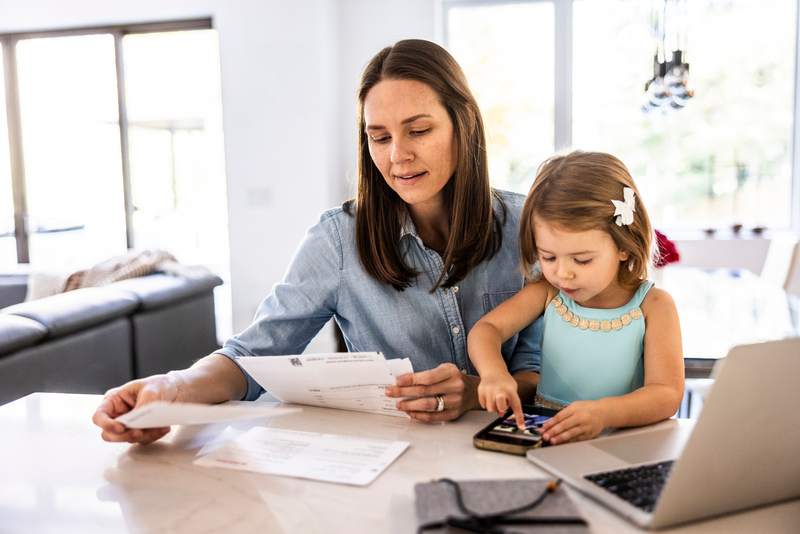Filing for bankruptcy is a last-resort option that can discharge your unmanageable debts and offer a fresh financial start. However, bankruptcy badly damages your credit and makes it difficult to borrow money. The good news is that your bankruptcy eventually will fade from your credit report, so it won’t haunt your financial life forever. Here’s what you need to know about bankruptcy loans and how to get one.
Key Takeaways:
- If you file for bankruptcy, it will remain on your credit report for seven to 10 years and affect your ability to get a loan.
- With Chapter 7 bankruptcy, your property will be sold to pay off debts. Chapter 13 bankruptcy allows you to keep your assets if you have a steady income.
- It’s still possible to get a personal loan after you’ve declared bankruptcy, but you likely will pay more in interest and fees.
Can You Get A Personal Loan After Bankruptcy?
Yes, it’s possible to get a personal loan after you have filed for bankruptcy. However, having a bankruptcy on your credit report will make it difficult and expensive to obtain financing.
Filing for bankruptcy can help you get relief from debts that you can’t afford to pay. The legal process allows you to pay your creditors through a structured payment plan or liquidating your assets. Any remaining debt will be discharged, and you’ll no longer be on the hook for it.
Filing for bankruptcy comes with some considerable consequences, though. You stand to lose property and assets, and your credit will be damaged badly.
Since lenders consider your credit score when determining whether to approve you for a personal loan, can you still qualify after bankruptcy?
“The short answer: yes,” says Derek Jacques, a bankruptcy attorney and owner of The Mitten Law Firm in Southgate, Michigan. “The long answer: yes, but usually not immediately after your bankruptcy case is discharged. Bankruptcy is an opportunity to rebuild your financial life, but it will have a long-term impact on your credit. You will most likely struggle to qualify for most loans for one to three years post-bankruptcy.”
Some lenders offer loans geared toward buyers with poor credit. These loans typically come with higher interest rates and fees.
Not Sure What Loan Product Is Right For You?
Answer a few simple questions to compare Refinance, Home Equity and Personal Loan offers
Types Of Bankruptcy
The type of bankruptcy you file determines how long it will affect your credit and your ability to get a loan. The two main types are Chapter 7 and Chapter 13 bankruptcy. Both allow for some or all of your debts to be eliminated. Some debts, such as child support, spousal support, taxes and criminal restitution charges, cannot be discharged.
Chapter 7 Bankruptcy
Here’s what you need to know about Chapter 7 bankruptcy:
- It is the most common type for individuals and spouses filing jointly.
- It typically requires selling your property or assets to settle your debts with creditors.
- Some types of property are exempt from being sold if needed for everyday living, such as your home, car and clothing.
- Other types of nonessential property are not exempt and can be liquidated – like any additional cars or art pieces.
- Once you file, an automatic stay will prohibit asset repossession, foreclosure or your utilities being cut off unless the creditor gets court approval.
- Chapter 7 is best suited to people who don’t have a steady income and need to liquidate their assets to pay off debts.
- A Chapter 7 bankruptcy will remain on your credit report for 10 years after you file.
Chapter 13 Bankruptcy
Now let’s take a look at Chapter 13 bankruptcy:
- You can keep your property if you have a steady income.
- You’ll need a plan to pay most, if not all, of your debts within three to five years.
- If you have secured debt like a mortgage on a home, you can keep making payments and keep that property.
- This type of bankruptcy is typically better suited to people with a steady income.
- Chapter 13 bankruptcy will remain on your credit report for seven years after you file.
Get A Personal Loan Today
Find a lender that can help you find the right loan terms for your financial situation
When Can I Get A Loan After Bankruptcy?
Each lender will have its own underwriting requirements for a loan. While there’s no exact timeline for how long you’ll need to wait before you can get approved for a loan, your bankruptcy will remain on your credit report for at least seven years. This will affect whether you’re approved for a loan and the terms offered.
“Initially, you might only qualify for secured loans or loans that have extremely high interest rates,” Jacques says. “Secured personal loans, such as a HELOC or home equity loan, might be possible, but only if you have kept your home through your bankruptcy. If you retained a vehicle you own, you might be able to qualify for a title loan. After some time, as long as you are practicing good credit habits, you’ll be able to qualify for more traditional loans with better terms.”
If the loan isn’t urgently needed, you could also wait seven to 10 years until the bankruptcy has been removed from your credit report.
What’s Your Goal?
Buy A Home
Discover mortgage options that fit your unique financial needs.

Refinance
Refinance your mortgage to have more money for what matters.
Tap Into Equity
Use your home’s equity and unlock cash to achieve your goals.
Is It Difficult To Get A Loan After Bankruptcy?
Getting a loan after bankruptcy can be more challenging because of the damage it does to your credit. However, it’s not impossible to get a personal loan with bankruptcy on your credit report – you just may have to pay more for it.
“Yes, it can be difficult to get a loan after a recent bankruptcy,” Jacques says. “You will have to have good credit history built up over time in order to make getting a loan more realistic.”
How To Get A Loan After Bankruptcy
Here’s a rundown of the steps you can take to get a loan after you’ve declared bankruptcy.
1. Review Your Credit Report
Bankruptcy will deal quite a blow to your credit report – it can knock up to 200 points off your score. Before you can get a new loan, you’ll need to inspect the damage to get an idea of what loans you’ll be eligible for with your latest credit score. Minimum credit score requirements vary by lender, but you’ll typically need a credit score of at least 550 to get a personal loan and at least 650 to get a decent interest rate. Working to rebuild your credit can help you have an easier time securing financing in the future.
“After a bankruptcy, your best bet will be to continue to pay your bills on time and practice other good credit habits,” Jacques says. “Secured credit cards can help you rebuild your credit over time.”
2. Determine Loan Amount
Next, you’ll need to determine how much you need to borrow. Many lenders typically offer $1,000 to $50,000 for a personal loan. Since you likely will pay a higher interest rate, you’ll want to avoid borrowing more than you need. Also, the more money you borrow, the bigger your monthly payments will be. It can be helpful to map out your post-bankruptcy budget to avoid running into even more problems with debt.
3. Shop For A Lender
It’s a good idea to shop around and compare quotes from different lenders to make sure you’re getting the best terms possible. Remember, your bankruptcy will likely result in a higher interest rate, but shopping around can help you secure the best rate possible.
“You can also look for secured loans if you are in a jam,” Jacques says. “Avoid some of the more predatory short-term or ‘payday’ loans if at all possible. If you can do this, over time, you will be able to qualify and be approved for loans.”
4. Get Prequalified
Getting prequalified for a personal loan will give you an overall snapshot of the details of the loan you’ll likely qualify for, so you’ll know what you’re getting into before you make it official. Lenders only run a soft credit check during this process, so you can get prequalified with multiple lenders without hurting your credit. Then you can use these prequalification letters to determine which lender you want to work with.
5. Submit Loan Application
Once you’ve chosen a lender, it’s time to apply. During underwriting, the lender reviews your finances to ensure you can afford the loan. The lender will do a hard credit check, temporarily lowering your credit score. It can take a few days to find out whether you’ve been approved.
FAQ
Here are answers to some frequently asked questions about getting a loan after bankruptcy.
The Bottom Line
Filing for bankruptcy can help you get out from under the weight of crippling debt. However, declaring bankruptcy can make it more difficult to get a personal loan. If approved, you’ll likely have to pay more for the loan. Your bankruptcy will stay on your credit report for seven to 10 years, depending on the type of bankruptcy you choose.
More From Quicken Loans:

Rory Arnold
Rory Arnold is a Los Angeles-based writer who has contributed to a variety of publications, including Quicken Loans, LowerMyBills, Ranker, Earth.com and JerseyDigs. He has also been quoted in The Atlantic. Rory received his Bachelor of Science in Media, Culture and Communication from New York University. He also completed the SoFi/Coursera Fundamentals of Personal Finance Specialization consisting of five courses: Introduction to Personal Finance, Saving Money for the Future, Managing Debt, Fundamentals of Investing, and Risk Management in Personal Finance.












